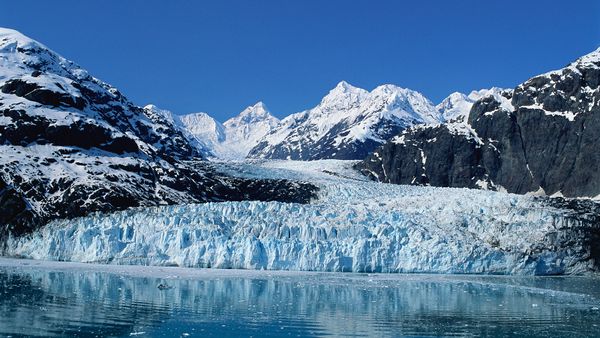You may be immensely concerned with the idea of global warming. It might surprise you, then, to learn that we are still technically in an ice age. An ice age is a period of cooling, marked by the presence of glaciers and ice sheets, such as those currently found in Antarctica and Greenland. Ice ages contain both cold periods, known as glacials, and warm periods, known as interglacials.
When most people think of the ice age, however, they're not thinking of interglacial periods such as the one we're experiencing now. They're thinking of woolly mammoths and huge swaths of land covered with ice.
Advertisement
The Earth has experienced several ice ages, but the term "ice age" has come to denote the last glaciation, a cold period marked by glacier and ice sheet cover. This glaciation, which occurred in the Pleistocene era, began about 70,000 years ago and ended 10,000 years ago. It contained at least four major glaciations, the last of which is known as the Wisconsin glaciation because the best evidence of it is found in present-day Wisconsin. In this article, we'll learn what that glaciation was like.
Ice ages may be as old as the Earth itself, but the concept is fairly new. Although people spotted the evidence that would eventually be used to prove the existence of an ice age -- large boulders that didn't seem to belong, mounds of rock debris known as moraines and scratches and grooves on the sides of mountains -- they attributed it to a giant flood. And not just any flood, but the one that spurred Noah to build an ark.
The idea of an ice age came from Switzerland, where these geologic clues led some to think that the alpine glaciers must have once been more extensive. A naturalist named Louis Agassiz became fascinated by these signs and presented the idea of glacial activity at a conference in 1837. The scientists were underwhelmed and told Agassiz to go back to studying fossil fish.
Granted, Agassiz's first theory wasn't perfect. He thought that the Earth froze suddenly, maybe after a catastrophic event, and that glaciers had extended as far as the Mediterranean. Regardless, he was determined to show how glaciers had affected the world.
How did Agassiz and others eventually prove the ice age theory? Did they figure out what caused ice ages? And just how much ice do you need for an ice age? Find out on the next page.
Advertisement







